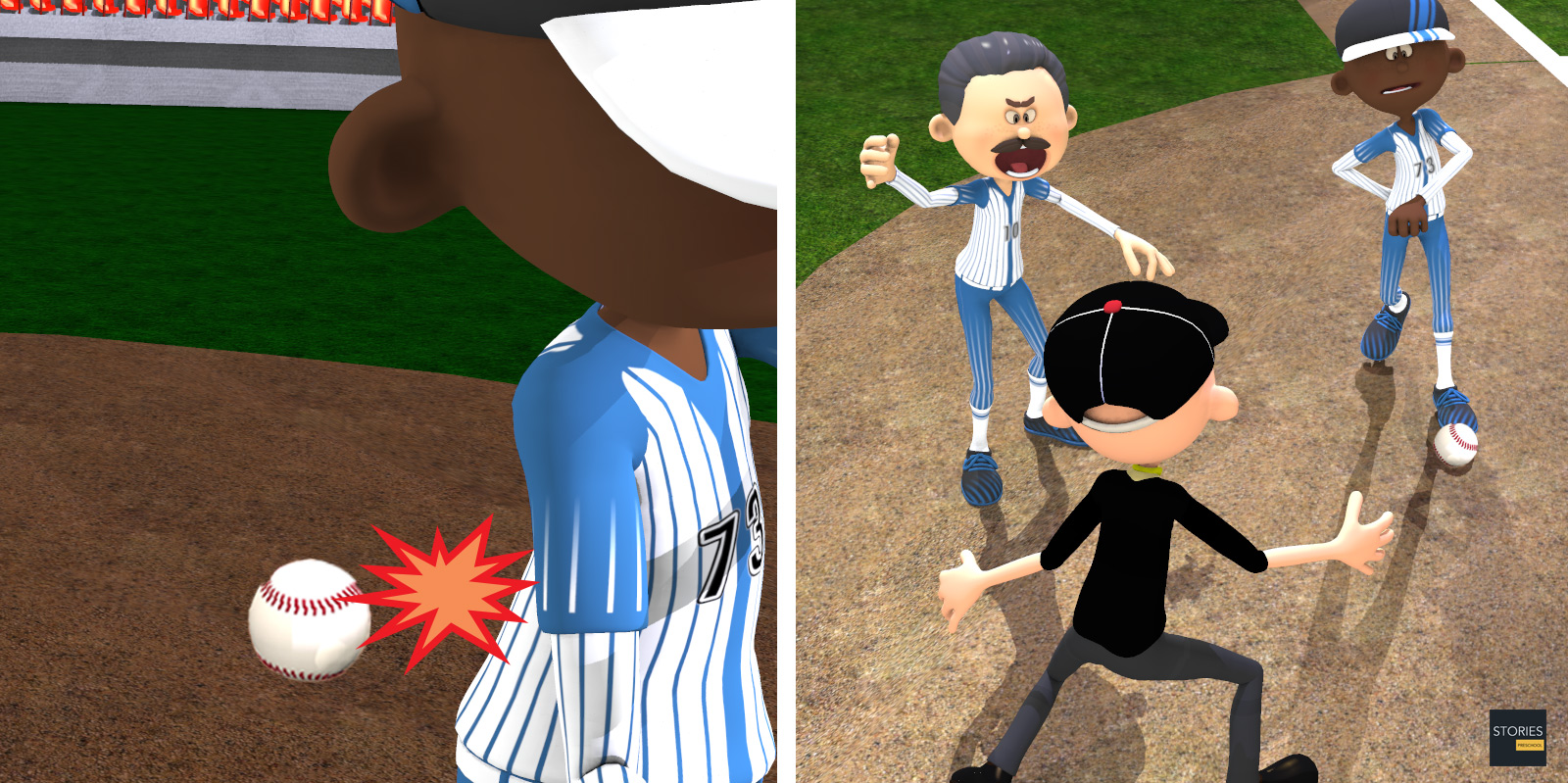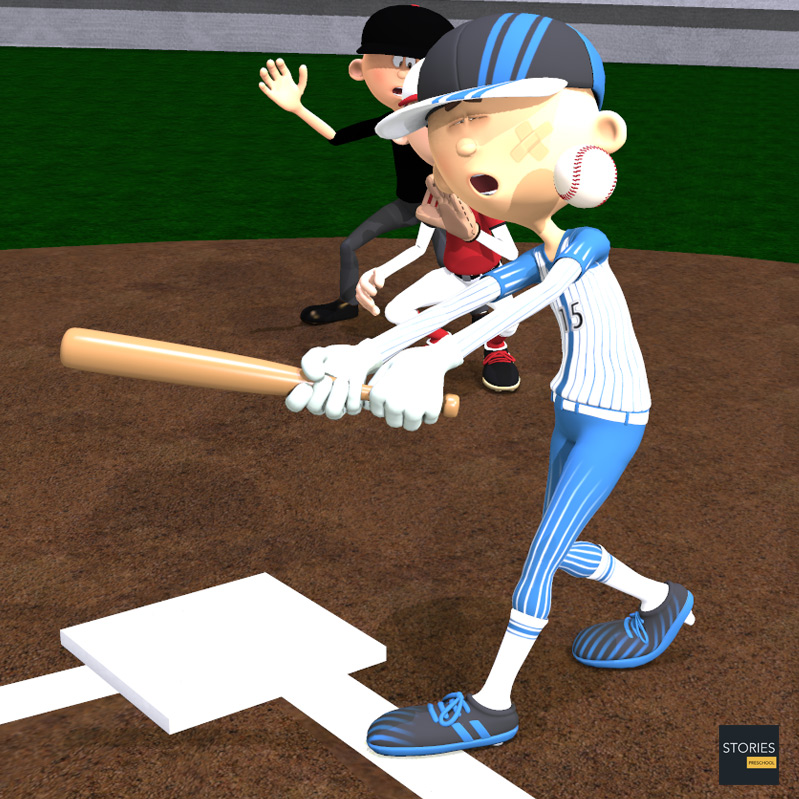Baseball

Baseball Hit by Pitch
In baseball, hit by pitch (HBP) is a situation in which a batter or his clothing or equipment (other than his bat) is struck directly by a pitch from the pitcher; the batter is called a hit batsman (HB). A hit batsman is awarded first base, provided that (in the plate umpire's judgment) he made an honest effort to avoid the pitch, although failure to do so is rarely called by an umpire. Being hit by a pitch is often caused by a batter standing too close to, or "crowding", home plate.

Official Rule
Per baseball official rule 6.08(b), a batter becomes a baserunner and is awarded first base when he or his equipment (except for his bat):
- is touched by a pitched ball outside of the strike zone,
- and he attempts to avoid it (or had no opportunity to avoid it),
- and he did not swing at the pitch.
If all these conditions are met, the ball is dead, and other baserunners advance if they are forced to vacate their base by the batter taking first. Rule 5.09(a) further clarifies that a hit by pitch is also called when a pitch touches a batter's clothing.
In the case where a batter swings and the pitch hits him anyway, the ball is dead and a strike is called. If the batter does not attempt to avoid the pitch, he is not awarded first base, and the pitch is ruled either a strike if in the strike zone or a ball if out of the strike zone. Umpires rarely make this call.
A hit-by-pitch can also be called on a pitch that has first touched the ground before hitting the batter. Such a bouncing pitch is like any other, and if a batter is hit by such a pitch, he will be awarded first unless he made no attempt to avoid it (and he had an opportunity to avoid it).
A batter hit by a pitch is not credited with a hit or at bat, but is credited with a time on base and a plate appearance; therefore, being hit by a pitch does not increase or decrease a player's batting average but does increase his on-base percentage. A batter hit by a pitch with the bases loaded is also credited with an RBI per MLB rule 10.04(a)(2). A pitch ruled a hit by pitch is recorded as a ball in the pitcher's pitch count, since by definition the ball must be outside the strike zone and not have been swung at.
The rule awarding first base to a batter hit by a pitch was instituted in 1887.
Tactical Use
Inside pitching is a common and legal tactic in baseball, and many players make use of brushback pitches, or pitches aimed underneath the chin, commonly referred to as "chin music", to keep players away from the plate. "Headhunter" is a common term for pitchers who have a reputation for throwing these kinds of pitches. However, throwing at a batter intentionally is illegal, and can be very dangerous. When an umpire suspects that a pitcher has thrown at a batter intentionally, but is not certain, a warning is issued to the pitcher and the managers of both teams. From that point on, any pitch thrown at a batter can cause the pitcher and the manager of the offending team to be ejected immediately from the game. Serious offenses such as a ball thrown at the head (called a beanball) can result in the immediate ejection of the pitcher, and the manager if he ordered the beanball, even without a warning. If the umpire is certain that the pitcher intentionally hit the batter with the pitch, the pitcher is ejected from the game with no warning.

Often, if a player is acting rude or unsportsmanlike, or having an extraordinarily good day, the pitcher may intentionally hit the batter, disguising it as a pitch that accidentally slipped his control. Managers may also order a pitcher to throw such a pitch (sometimes called a "plunking"). These pitches are often aimed at the lower back and slower than normal, designed to send a message more than anything else. The opposing team usually hits a batter in retaliation for this act. The plunking generally end there because of umpire warnings, but in some cases things can get out of hand, and sometimes they lead to the batter charging the mound, bench-clearing brawls, and several ejections. Such plunking duels are more common in the American League than in the National League, because in the NL the pitchers must bat for themselves and open themselves up to direct retaliation (although hitting a fellow pitcher is a serious breach of baseball etiquette).
SPORTS

RESOURCES
This article uses material from the Wikipedia articles "Baseball" and "Hit by pitch", which is released under the Creative Commons Attribution-Share-Alike License 3.0.
© Stories Preschool. All Rights Reserved.












